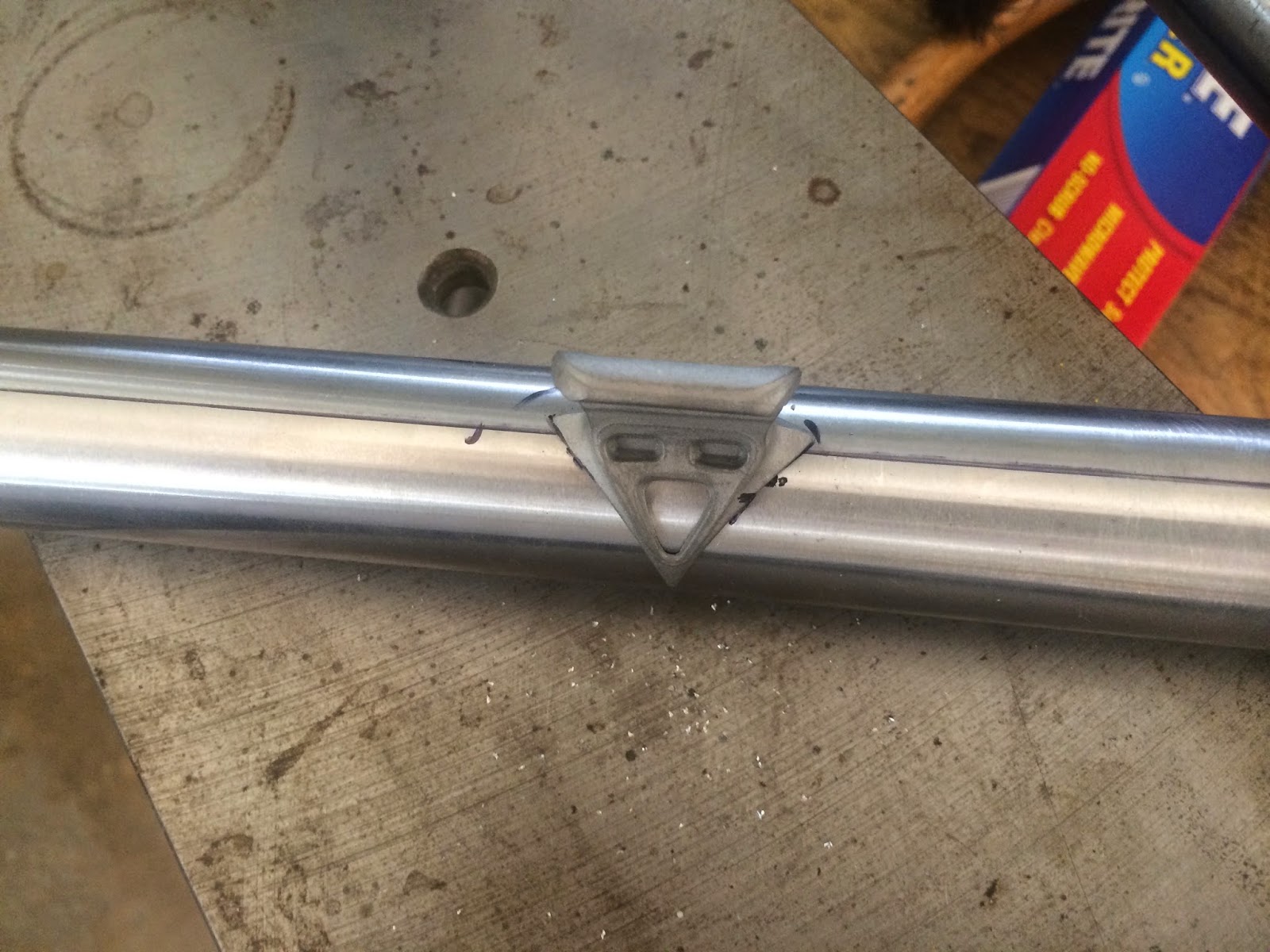Pictures from 2 sessions. Brazing and Filing, as follows.
Front end pinned and starting to flux it up.
Camera in one hand, torch in the other.

Despite bending the BB to tighten the ST/DT angle, when I started to reassemble the frame, the seat tube wanted to pull back.
A little heat on the front pulls it a bit forward and eliminates the tension.
Here's the seat lug pinned and fluxed.
The seat cluster was only pinned on one side, so I gave it a tack. And spilled some filler.
The jigs centering cones get in the way of pinning the bottom lug edge, so a tack there as well.
Here the seat lug has been brazed, soaked, wire brushed, and is beginning to be filed. Al little excess filler was drawn through both ports. In general, however, the shore lines are nice and crisp - shouldn't be hard to clean up.
And here's the upper head lug at a similar point in the process.













































